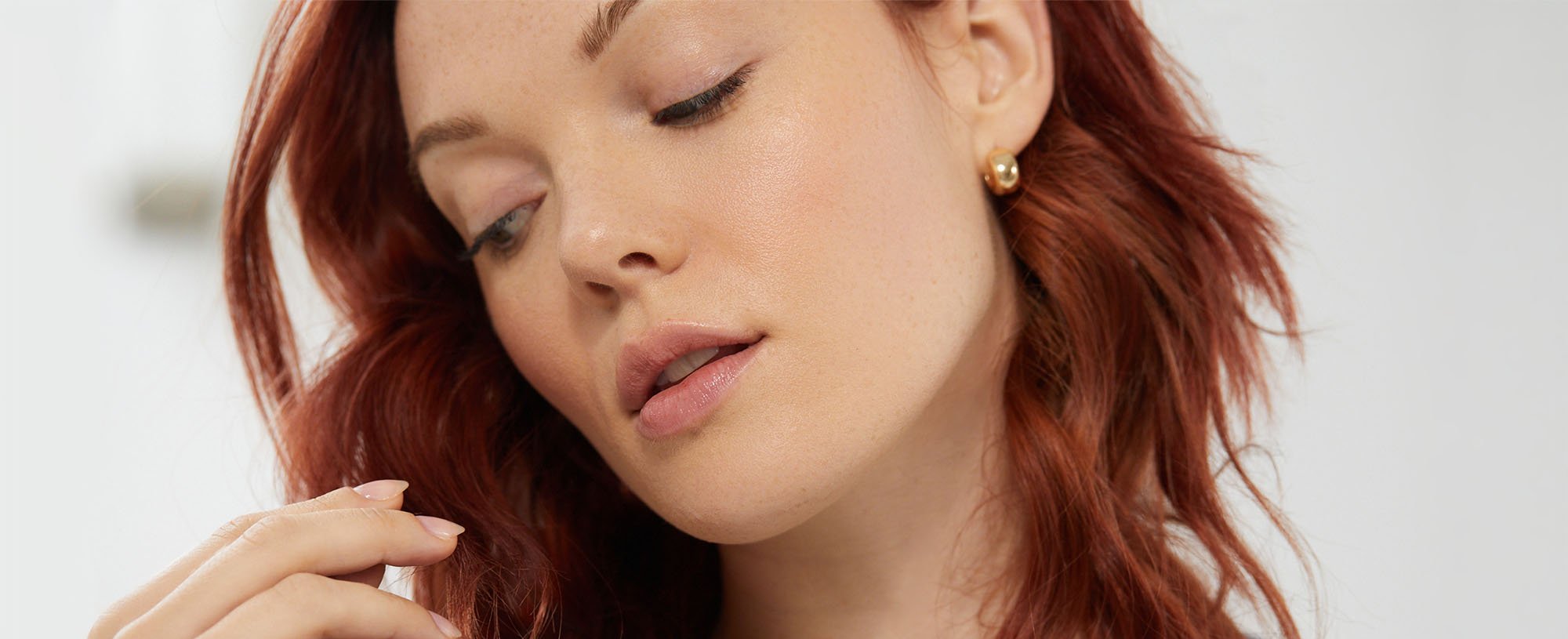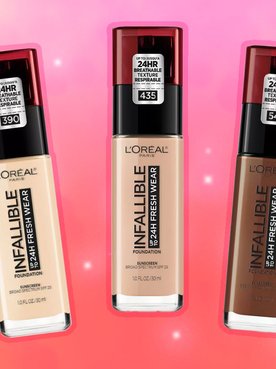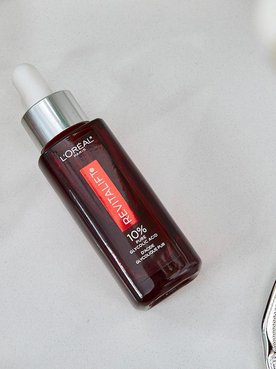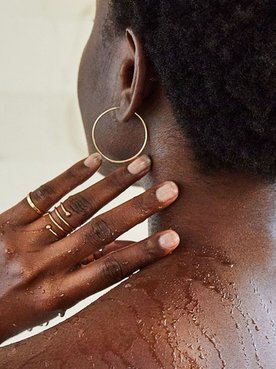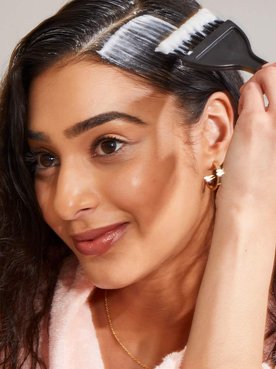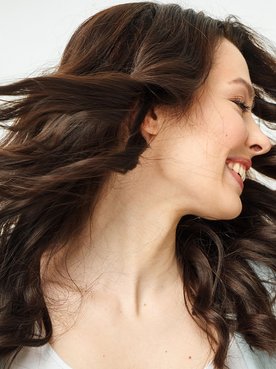Everyone has that one hair care belief they can’t seem to let go — from a kitchen concoction for guaranteed growth to styling solutions created decades ago and everything in between. Not only are many of these tall tales of tresses out of date but they could also be holding your hair back from looking its greatest today. However, even in the age of information, untangling fiction from fact can be a hairy situation. So we’ve enlisted the expertise of L’Oréal Paris celebrity hairstylist and colorist Jonathan Colombini to help us finally straighten out the six of the biggest hair care myths. It’s time to wash them down the drain and leave them there for good.
1. Trimming Your Hair Makes It Grow Faster
If you’ve ever searched the internet for ways to make your hair grow faster, you’ll find trimming your hair is one of the most common results. Although this hair care tip does have its benefits, there’s more to maximizing hair growth than just taking a little off the top (or the bottom, rather).
“Trimming does not make your hair grow faster, however, it prevents the ends of your hair from splitting which in turn could cause more to be cut off [resulting in shorter hair],” says Colombini.
According to the American Academy of Dermatology (AAD), your hair grows about six inches a year, meaning you have about half an inch of hair growth a month. While your hair can only grow so fast in that timeframe, it’s hard for your strands to sprout when split ends are playing defense against your progress. To promote healthy hair growth, you should make sure to get regular trims—a common recommendation is every eight to twelve weeks while also following a healthy hair care routine.
2. Stress Causes Gray Hair
According to Colombini and the Cleveland Clinic, chances are, your hair won’t be suddenly losing color from stress. That being said, stress can cause gradual, long-term graying. The Cleveland Clinic states that researchers examining gray hair have found evidence that free radicals—damaging chemicals that can be caused by stress and other factors—could be responsible for destroying pigment-producing stem cells. However, the Cleveland Clinic notes that there is no conclusive proof of the role stress plays in the graying process. To shed some light on the other factors that can contribute to gray strands, check out our article, What Causes Gray Hair?
3. Dandruff Means Your Scalp Is Dirty
While dandruff can be unpleasant to look at and frustrating to manage, you might find a bit of comfort in the fact that it is not a reflection of the cleanliness of your scalp.
As Colombini explains, “[dandruff] means there’s something more serious happening [with your scalp], for which you should seek a doctor’s help. In most cases, it’s weather change or improper use of products.”
According to the Mayo Clinic, a variety of factors can cause dandruff (the flaking of skin on the scalp) including sensitivity to hair care products, not shampooing enough, shampooing too often, fungal growth, irritated, oily scalp, and dry skin.
While they can look incredibly similar, dandruff and dry scalp are not the same things. Your scalp, just like your skin, can be dry without flakes appearing. According to the American Academy of Dermatology (AAD), dry scalp occurs when the skin loses too much water as a result of sun damage, intensely stripping hair products, low humidity, and cold climates. While they do differ, a dry scalp can progress into dandruff.
If you’re concerned that you have dandruff as a result of fungal growth or irritation, or you’re experiencing patches of discoloration or inflammation, consult with your dermatologist. Otherwise, follow the tips in our article How To Manage Dandruff to get to the root of your flaky scalp concerns.
4. More Expensive Hair Products Give You Better Results
The rise of celebrity hairstylists and influencers on our screens has given us a wealth of new hair care tips, skills, and routines. Watching these style stars can sometimes make us feel like we have to have the most luxurious and innovative hair care products to get luscious locks. However, these exclusive brand names and chic packaging often come with a hefty price tag when it’s really only what’s inside that counts.
“Honestly it’s the ‘prettier’ packaging that’s always more expensive,” Colombini points out. “That’s what you’re paying for but the actual product is just the same as the inexpensive ones.”
While there is nothing wrong with treating your hair to a bit of pampering, it’s important to realize that these ” luxury” hair care products are a bonus to your hair care routine, not a necessity.
5. Using More Conditioning Products On Dry Hair Equals More Hydration
When it comes to treating dry, brittle strands, the simplest solution is to douse your parched mane in as much hydration as possible. However, using half a bottle of conditioner to your daily routine might not give your lackluster locks the revival that they need.
When it comes to conditioning treatments for your hair, less is definitely more. Since your hair can only hold so much hydration, once it reaches its maximum levels any product you apply on top of that isn’t actually helping your hair— only weighing it down. Not to mention, you may just end up wasting product, which isn’t great for your wallet or the environment. A good rule of thumb is to use one or two quarter-sized dollops of conditioner, depending on the thickness and length of your hair.
Another important part of caring for dry hair is using the right hair treatment for your mane. While the benefits of hair masks and deep conditioners can be very similar, they both have key differences. Typically, deep conditioners are used more often than hair masks. For example, when your strands are extra dry or really in need of some care, you can swap your regular conditioner for a deep conditioner. On the other hand, regardless of the state of your hair, you’ll only want to use a mask no more than a couple of times a week.
“If you’re using the correct conditioner or mask, then the amount you need isn’t relevant.” Colombini reminds.
6. Shaving Your Hair Makes It Grow Back Thicker
We can finally cut this age-old rumor off our list since the myth that hair grows back thicker after shaving is just not true.
Both Colombini and The Mayo Clinic agree that shaving facial or body hair doesn’t change its thickness. However, shaving does leave the hair with a blunt tip, so as the hair begins to grow back it typically feels coarse and stubbly. This is why it can sometimes appear that your hair is growing back thicker after shaving. Once the hair grows out, it will look just the same as it did before it was removed. This applies to the hair on your head, arms, face, and everywhere in between.
Next: 5 Things Your Hairstylist Wishes You Would Do Before Your Visit
Written by: Lauren Paige Richeson, Photography: Chaunte Vaughn, Associate Creative Director: Melissa San Vicente-Landestoy, Art Director: Hannah Packer, Associate Creative Producer: Becca Solovay, Associate Content Director: Shalwah Evans, Makeup Artist: Jonet Williamson, Hair Stylist: Akihisa Yamaguchi, Wardrobe Stylist: Alexis Badiyi, Digital Tech: Erik Dalzen, Photo Assistant: Sam Kang, Model: Alexandra Van Zant
